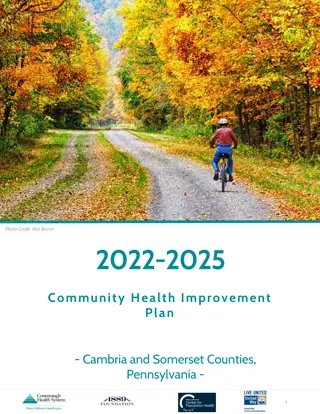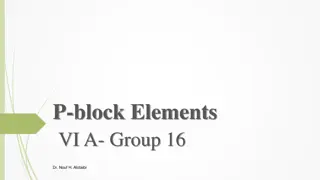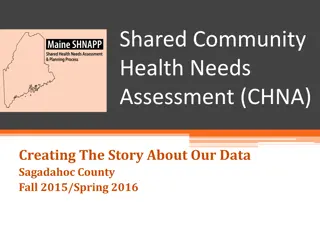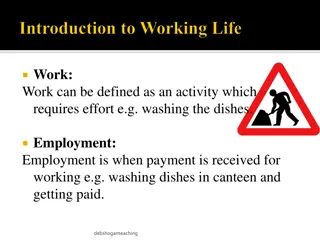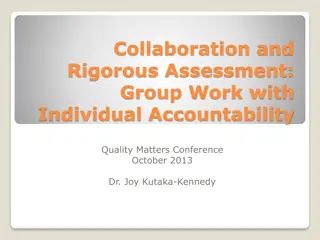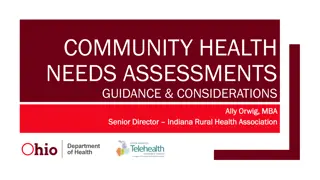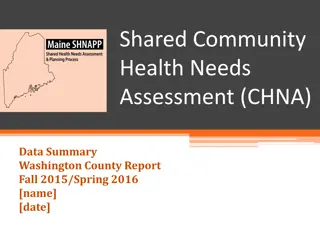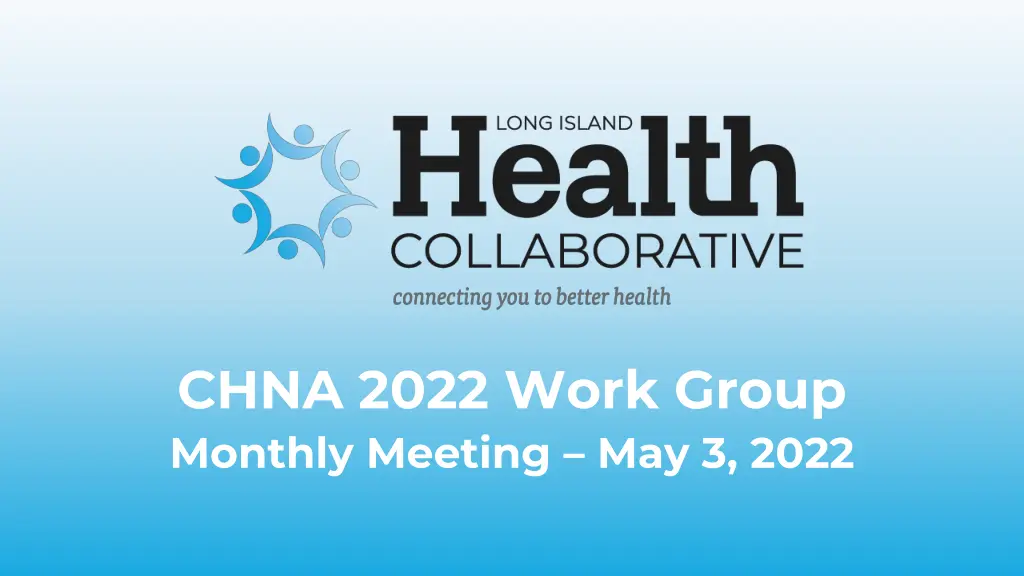
Community Health Needs Assessment (CHNA) 2022 Work Group Monthly Meeting Highlights
Explore the insights from the CHNA 2022 Work Group monthly meeting held on May 3, 2022. Topics covered include regional priorities, NYSDOH resources, qualitative analysis, and more. Engage with key stakeholders to address community health needs effectively.
Download Presentation

Please find below an Image/Link to download the presentation.
The content on the website is provided AS IS for your information and personal use only. It may not be sold, licensed, or shared on other websites without obtaining consent from the author. If you encounter any issues during the download, it is possible that the publisher has removed the file from their server.
You are allowed to download the files provided on this website for personal or commercial use, subject to the condition that they are used lawfully. All files are the property of their respective owners.
The content on the website is provided AS IS for your information and personal use only. It may not be sold, licensed, or shared on other websites without obtaining consent from the author.
E N D
Presentation Transcript
CHNA 2022 Work Group Monthly Meeting May 3, 2022
Welcome & Introductions Thank you for joining us! Please share your name and what organization you are representing in the chat box.
Agenda Welcome and Introductions Timeline Regional Priorities NYSDOH Resources CHAS Data CBO Key Informant Interview Qualitative Analysis Presentation Next Steps Discussion, Questions, Concerns
Timeline April 5 Meeting: consensus on priorities based on analysis DEC JAN FEB MAR MAY JUN JUL APR Late March: All CBO Key Informant Interviews complete Early May: CBO Key Informant Interview analyses complete CBO surveys all back by mid January Full CHNA due December 2022
Regional Prevention Agenda Priorities 2 selected at last meeting Prevent Chronic Diseases Promote Well-Being and Prevent Mental and Substance Use Disorders
NYSDOH Resources The County Health Indicators by Race/Ethnicity (CHIRE): https://www.health.ny.gov/statistics/community/minority/county/ The Leading Causes of Death dashboard: https://www.health.ny.gov/statistics/leadingcauses_death/. The Maternal and Child Health dashboard: https://www.health.ny.gov/MCHdashboard The Asthma Control Program Data Dashboard: https://www.health.ny.gov/asthmadashboard The County/ZIP Code Perinatal Data Profiles: https://www.health.ny.gov/statistics/chac/perinatal/
2021 CHAS Data Available on the LIHC website https://www.lihealthcollab.org/member-resources/data-resources
Key Informant Interview Analysis Introducing Michael Pape, Stony Brook University MPH Student
Community-Based Organization Key Informant Interview Qualitative Analysis Presentation Michael Pape Stony Brook University | MPH
Introduction and Background The Long Island Health Collaborative, Nassau and Suffolk County Health Departments, and Long Island Hospitals are conducting a Community Health Needs Assessment Key informants from community-based organizations across Long Island had answered a previous health needs survey and expressed interest in developing further discussion and sharing their expertise
Purpose Statement and Research Question The purpose of this interview project was to identify key themes highlighting the most pressing health issues facing Long Island s populace. Key informants from a variety of community-based organizations were interviewed and asked to identify health and social barriers and how they could be overcome for the population served What are the predominant health issues and barriers affecting Long Islanders?
Methodology Interview Structure: Grounded Theory Sampling Procedure Purposeful sampling: sending out surveys to key informants from CBOs who have knowledge and experience with Long Island s healthcare landscape Participants provide accounts of first-hand experience with the subject inquired 20 informants expressed interest in being interviewed and were contacted Interview instrument provides a mixture of open-ended response and rigid selection to invite participants to respond within a focused structure Consistent outreach and follow-through yielded 12 informants to fully proceed to the interview stage Researcher reviews the interview data collected; ideas and concepts become apparent and consistent and dominant themes surface Interviews were conducted between February 23rd, 2022 to March 4th, 2022 These themes are tagged as codes ; additional collection and re-review of data can group codes into higher-level concepts Additional themes drawn from the Kaiser Family Foundation Social Determinants of Health six domains and the five New York State Prevention Agenda Priorities
Interview Process Interview Instrument Data Collection Participation was voluntary Responses confidential Interview was conducted and recorded via Zoom with two interviewers Audio recordings were transcribed and uploaded to Atlas TI for analysis with interviewee permission Transcripts were cross-examined between each other to observe similarities and differences Common themes in all transcripts were identified and coded, with the codes derived via grounded theory as they were presenting themselves in the text Codes were also informed by New York State s Prevention Agenda and the Kaiser Family Foundation Social Determinants of Health six domains Information from the interviews was aggregated and a comprehensive report was produced A. B. Describe your role in the organization What specific services does your organization provide? Who is the target population? Describe the services your organization provides to minority populations to low-income to uninsured to other specific populations? 1. Please describe your organization. C. D. E. F. G. Economic Stability Neighborhood and Physical Environment Education Food Community and Social Context Healthcare System 2. Many factors affect the health care community members receive. Of the Kaiser Family Foundation Social Determinants of Health, which 3 most affect the healthcare of the community members you serve? 3. Please elaborate on why you chose those three determinants, and elaborate on how they affect the community you serve. [open ended response] 4. Of the three social determinants you identified, which are essentially barriers to care, what strategies do you recommend for overcoming these barriers? [open ended response] 1. 2. 3. 4. Prevent Chronic Disease Promote a Healthy and Safe Environment Promote Healthy Women, Infants and Children Promote Well-Being and Prevent Mental and Substance Abuse Disorders Prevent Communicable Diseases (Vaccine-Preventable Diseases, HIV, STIs, HCV, Antibiotic Resistance and Healthcare Associated Infections 5. The current New York State Department of Health Prevention Agenda has identified 5 health issues to address. Please choose your top 2 priorities for the community you serve. 5.
Interview Content Codes Common Themes Mental health We don t have enough organizations who are qualified providers of [mental health] services to actually offer them. We don t have enough people who are qualified in our system to actually provide the services Financial insecurity It s not true that people can live on $15 an hour, I mean let s just get right down to the basics [ ] but if we look at the poverty uptick in Nassau County you know that the percentage of poverty in Nassau County is through the roof. Education Education on all levels is critical, both as an adult and traditional K through 12, is the key to both a community s survival and personal success Barriers to healthcare You re not thinking about your mammogram if you don t have food to eat. We try to remove whatever barrier is preventing you from getting the health care that you need Primary Domain Access/Barriers Chronic Disease Sub-domain Location, Qualify, Transportation Cancer, Cardiovascular, HIV, HPV, Hypertension, Obesity, Oral Health, Immunization, Physical Activity, Vaccination Culture, Ethnicity, Language, Minority, Race, Similarity Cost of living, Inflation, Economics, Expenditures, Expenses, Money, Unaffordable College, High School, Knowledge, Literacy, Vocational School Air Quality, Biking, Injury, Location, Physical Environment, Road Quality, Traffic, Safety, Walk Cooking, Food Desert, Nutrition Elderly, Homeless, Racism, Red-Lining, Unemployed, Veteran Healthcare, Hospital, Insurance, System, Tax, Technology Federal, Government, Lobbying, Medicaid, Medicare Depression, Hopeless, Mental illness, Psychiatric, Psychotic, Stigma, Stress Application, Initiative, Partnership, Program, Project, Service, Solution, Volunteer Addiction, Alcohol, Heroin, Opioids, Treatment Empowerment, Outreach, Support Baby, Child, Childcare, Maternal Mortality, Mother, Women, Reproductive Health Culture/Language Economics/Financial Security Education Environment Food Insecurity/Nutrition Inequality/Disparities Infrastructure Legislation/Government/Federal Mental Health Programs and Services Substance Abuse Support Groups Women+Infants+Children
Results All participants talked about their roles and organizational objectives with enthusiasm All participants provided their expertise regarding the social determinants of health most impacting Long Island All participants expressed what they would like to see improved about Long Island s social and healthcare landscape and additional goals moving forward
Discussion, Experience and Reflection Learned much about the interviewing process, along with the Long Island Health Collaborative s operations and goals More comfortable with the process of qualitative research, and the grounded theory of qualitative research and data analysis More informed about Long Island s healthcare and economic landscape Learned about the Kaiser Family Foundation s Social Determinants of Health
CBO Survey Quantitative Analysis PRIORITIES SOCIAL DETERMINANTS Prevent Chronic Disease Community and Social Context Economic Stability Prevent Communicable Diseases Education Food Promote a Healthy and Safe Environment Healthcare System Neighborhood and Physical Environment Promote Healthy Women, Infants and Children Promote Well-Being and Prevent Mental and Substance Use Disorders 11% 14% 25% 25% 14% 22% 17% 21% 22% 17% 12%
CBO Survey Quantitative Analysis 45 total responses Analysis complete Available on LIHC website https://www.lihealthcollab.org/member- resources/data-resources
Next Steps CHNA due December 2022 Template coming in June
Discussion, Questions, etc. Questions, comments, concerns?

